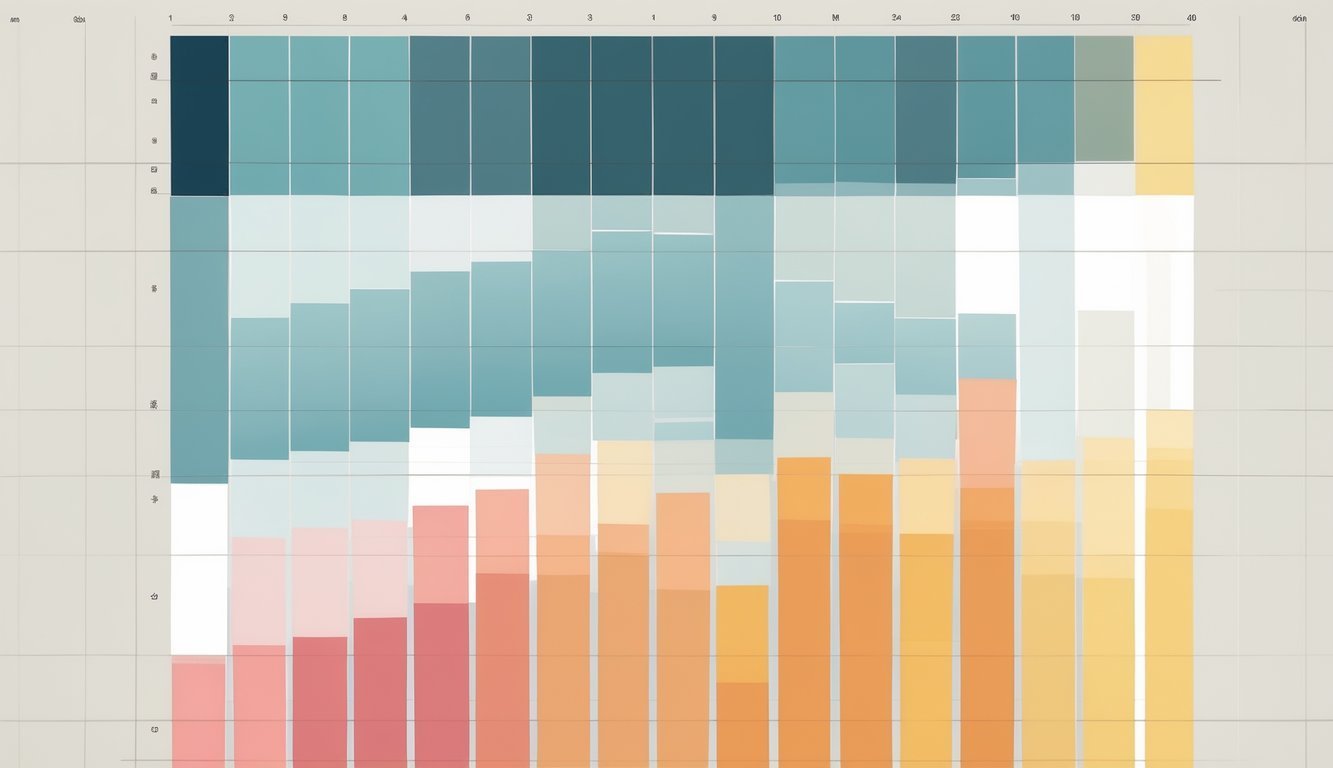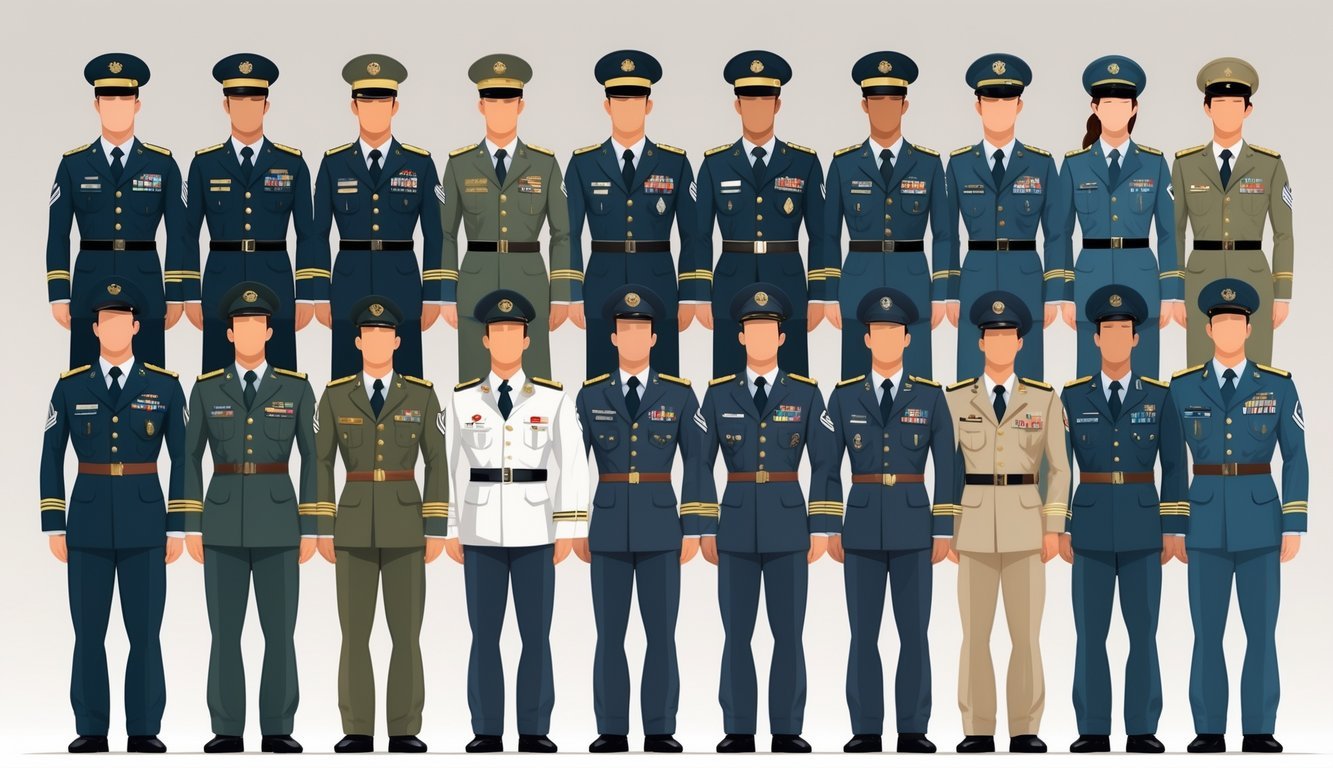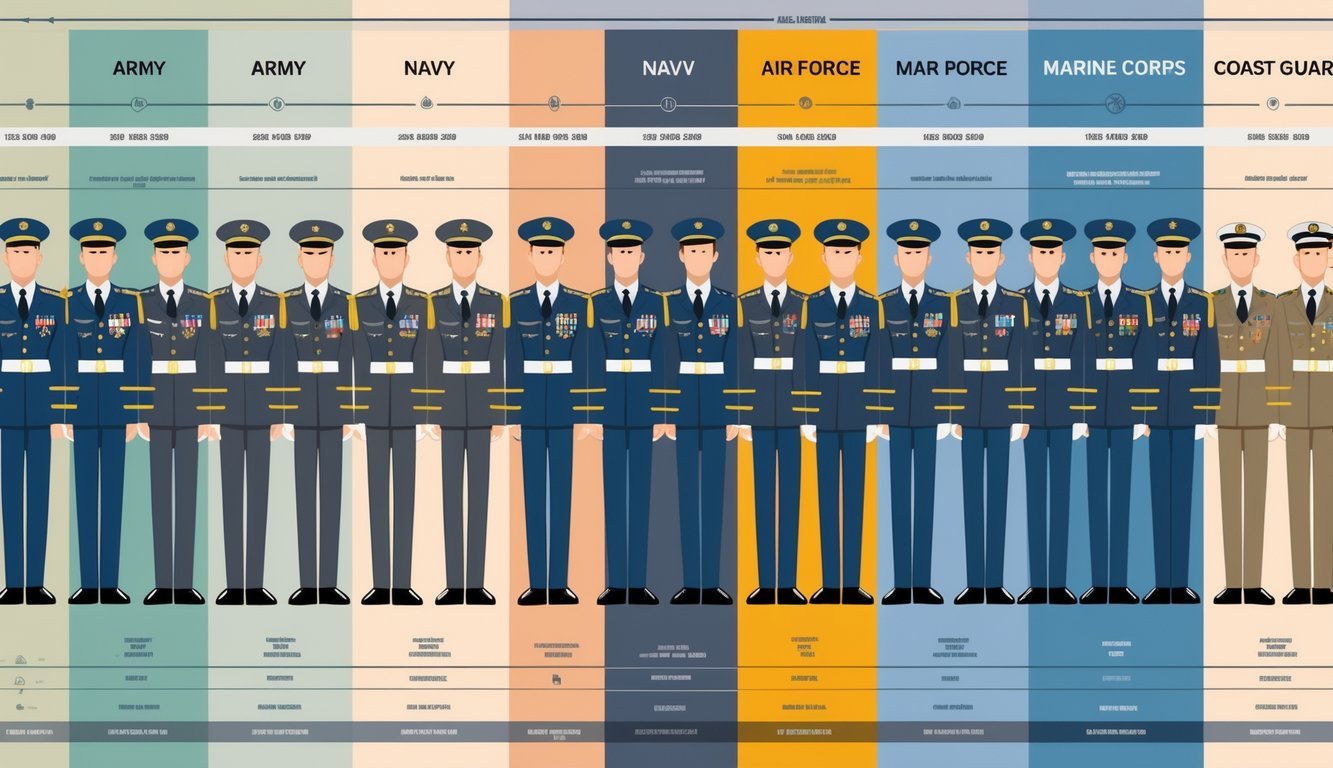PsychNewsDaily Publishers
100 Summit Drive
Burlington, MA, 01803
Telephone: (320) 349-2484
PsychNewsDaily Publishers
100 Summit Drive
Burlington, MA, 01803
Telephone: (320) 349-2484
Rank charts visually organize information, showing the hierarchy of military ranks, roles, and responsibilities across various branches, facilitating quick understanding and decision-making.

A rank chart just lays things out in order—whether it’s people, items, or groups. You can spot who or what’s at the top in seconds, and see how everything stacks up underneath. Maybe you’ve checked out military ranks, game leaderboards, or even a to-do list; a rank chart just makes that info way easier to read.
You’ve probably bumped into rank charts all over the place. The military uses them to show who’s in charge, but you can whip up your own for work, games, or just for fun.
Lots of apps let you drag and drop things into order, so making your own chart is pretty simple. Comparing stuff gets a lot clearer, and making decisions? Way faster.
If you’re curious about how these charts work or want to make one yourself, you’re in the right spot. We’ll walk through what makes a solid rank chart and how you can use one to organize whatever you need.

Rank charts lay out how military ranks fit together. They break down different jobs, pay grades, and what it takes to climb the ladder.
You’ll see the symbols or insignia for each rank too, which is pretty handy.
A rank chart is basically a visual list, showing military ranks from lowest to highest. You’ll find abbreviations, pay grades, and the little badges for each one. In the U.S. Army, for example, you might see “E-1” or “O-3” to show the level and type.
The chart splits ranks into three groups: enlisted folks, warrant officers, and commissioned officers. Most soldiers start out in the enlisted side, like E-1 to E-9. Warrant officers fall in between, and commissioned officers (O-1 to O-10) lead at higher levels.
With a quick glance, you can tell someone’s position, authority, and pay grade.
Military ranks spell out who’s got what kind of responsibility and authority. Your rank decides what you do and where you fit in the chain of command.
Higher ranks usually mean you lead more people and get to call bigger shots. When you pick up new skills, you can move up to the next rank. Each step comes with its own insignia, so everyone knows your status.
Knowing the ranks helps people work together and respect the right order. It keeps things running smoothly, and everyone knows what’s expected.

When you understand the rank structure, you can figure out what each person does and how much responsibility they have. Every branch uses its own titles and insignia, but all of them basically sort people into officers, warrant officers, and enlisted members.
Each rank tells you where someone stands in the chain of command.
The U.S. Army splits into three main groups: enlisted soldiers, warrant officers, and commissioned officers.
You start out as a Private (E-1), then move up to Private Second Class (PV2), Private First Class (PFC), and Specialist (SPC).
The enlisted leader ranks kick off at Corporal (E-4) and go up through NCOs like Sergeant (E-5), Staff Sergeant (E-6), and Sergeant First Class (E-7).
Warrant officers sit between enlisted and commissioned officers. They’re the tech experts, ranging from Warrant Officer 1 (WO1) up to Chief Warrant Officer 5 (CW5).
Commissioned officers start at Second Lieutenant (O-1) and climb up through First Lieutenant, Captain, Major, Lieutenant Colonel, and Colonel. Generals begin at Brigadier General (O-7) and go up to General of the Army (O-10), which only comes out in wartime.
In the Navy and Coast Guard, people call enlisted ranks “rates.” The lowest is Seaman Recruit (E-1), then Seaman Apprentice (E-2) and Seaman (E-3).
The Navy’s NCOs are Petty Officers, from Third Class (E-4) to First Class (E-6). Higher up, you’ll find Chief Petty Officer (E-7), Senior Chief Petty Officer (E-8), and Master Chief Petty Officer (E-9).
The top enlisted job is Master Chief Petty Officer of the Navy, who advises Navy leadership.
Officer ranks start at Ensign (O-1), then move to Lieutenant Junior Grade (O-2), then Lieutenant (O-3), Commander (O-5), and finally Admiral (O-10).
The Coast Guard’s ranks are almost the same as the Navy’s.
The Air Force and Marine Corps have their own ranks, but the structure’s kind of similar.
In the Air Force, you begin at Airman Basic (E-1), then go up to Airman, Airman First Class, and Senior Airman.
NCOs start at Staff Sergeant (E-5) and go up to Technical Sergeant and beyond. The top enlisted spot is Chief Master Sergeant of the Air Force.
For the Marines, you start as a Private (E-1), then move to Private First Class (E-2) and Lance Corporal (E-3). NCO ranks include Corporal (E-4), Sergeant (E-5), and Staff Sergeant (E-6).
The highest enlisted Marine is the Sergeant Major of the Marine Corps.
Officers in both branches start as Second Lieutenants (O-1) and can reach up to General (O-10). Each rank means more leadership and bigger responsibilities.

Rank charts let you organize stuff by strength, value, or whatever matters most. You can use all kinds of tools and methods to build them—even if you’re not a designer.
Pick the categories or tiers you want, like S, A, B, C, and so on. Then, jot down the game characters or items and drop each one into the tier that fits their strength or importance.
People use online tier list makers, spreadsheets like Excel or Google Sheets, and design apps like Canva. Most of these let you drag and drop things into place.
Absolutely. Tons of online tools are built for beginners. You just drag and drop—no design skills needed.
You’ll find templates on free download sites, design platforms like Canva, or specialized tier list maker websites. Templates make starting out a whole lot faster.
The ‘S’ in S tier means “Super” or “Special.” It’s the very top tier—better than A—so anything in S tier is the best of the best.
Absolutely! You’ll find plenty of websites out there that let you make tier lists without spending a dime.
Most of them offer handy templates and simple tools, so you don’t have to mess around with payments or downloads.